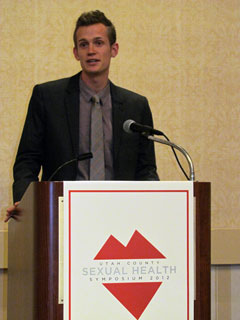Tips for STEM Mentors
It has been repeatedly proven that LGBTQ people face disproportionate rates of poverty, mental health challenges, homelessness, and access to higher education. These challenges impede traditional four-year completion rates and 4.0 GPAs. In STEM (though this is less true in biological and social sciences), greater rates of discrimination and harassment mean LGBTQ students often change majors or drop out altogether in order to move somewhere safer.
As someone who was raised in poverty, without educational access, kicked out of my family home in my teens, and had fifteen years of professional work history before beginning college, I check a lot of statistical boxes. PTSD makes traditional testing awful for me. Years of self-instruction and on-the-job training have resulted in personal learning processes that are not traditional. My questions are consistently met with: “Clearly you do not understand the basics. You need to work harder.” People’s assumptions build barriers, resulting in a distrust of my intelligence, diminished confidence when communicating with scientists, and less time for basic self-care and personal connections. It becomes too easy to believe that I truly do not belong in STEM.
I could share a number of strategies intended to empower us when we face such rebuttals, but this isn’t always on us. My thoughts of late turn to the system itself - why is STEM so hindered by learning differences? Why must interactions be aimed at proving that some of us inherently do not belong here?
With that in mind, I would like to share some points of guidance for those who train students and early career professionals.
Establish Dialogue: The best way to improve an individual’s understanding is to first pinpoint what they know and how they learn. As basic as that might seem, encountering educational dialogue in STEM has been rare. Rather, interactions often include a one-sided script of prescribed answers seemingly designed to hasten conversations. Perhaps these answers suit a traditional subset of students, but not all. Begin conversations with, “Tell me what your interpretation of this material is and where you are facing challenges.” This goes a long way toward identifying misunderstandings, building context for the questions being asked, and developing a shared language around the material.
Embrace “Stupid Questions”: Asking a question in academia often feels like a gatekeeping exercise - if intelligent enough, you are invited to sit down. Unfortunately, those most often told that they have stupid questions are women, people of color, and LGBTQ folks. Hence, the very act of crossing the threshold becomes wrought with ‘How do I phrase this question in exactly the right way to move forward in my studies?” Having consistently asked the “wrong” questions, I can say that I have learned to embrace the uncertainty. These questions are jumping off points. Instead of reacting negatively, consider what might not be obvious to others.
Recognize room for personal growth: Even experts have more to learn. Entertaining questions from diverse sources might be frustrating, perhaps due to lacking understanding of the question or not knowing the answer. Instead, reflecting on the question and asking follow-up questions to clarify can engage the asker and bridge dialogue. Moreover, the listener gains the opportunity to view their subject through a new lens!
Refer to resources: It may be challenging to devote full attention to one-on-one instruction in a way that accommodates unique learning styles. Perhaps your teaching style does not align well with another person’s learning style. It is entirely okay to say, “These questions show that you are invested in learning this material. May I point you to additional resources?” For those who want their lesson plans to cater to diverse learning styles, many resources already exist! For those who would rather refer out, there are plenty of individuals who have a firm grasp of the material and want to gain teaching experience. Their methods might better suit a particular learning style. Connecting students to a broad list of individuals and materials can equally demonstrate dedication to the student and the subject matter.
While I recognize that the principles here are in no way exhaustive, these recommendations are a starting point for people who want to engage more meaningfully and intentionally while supporting LGBTQ students and early career professionals. It is precisely these values that I see mirrored in the mentorship efforts of organizations like Point Foundation. Engaging us in dialogue welcomes us to the STEM table without compounding the challenges we face. Understanding that we offer a rich history behind our questions deepens the ingenuity within our fields. Ultimately, learning from us, as we learn from you, fosters a relationship of trust while establishing our confidence in communicating academically.
This post was written by Point Scholar Ryder Fox.
Related Posts
January 22, 2015, teampoint

Davis is Burning, But It's For A Good Cause!
Integral to every Point Foundation Scholarship is a Community Service Project that seeks to creates...
November 16, 2012, teampoint

Cary Crall Launches Sexual Health Symposium
I was frustrated by the serious health consequences suffered by several of my friends due to...
January 23, 2017, teampoint

LGBTQ Identity and Impostor Syndrome
When I first discovered the Point Foundation website, I went directly to the list of scholarship...